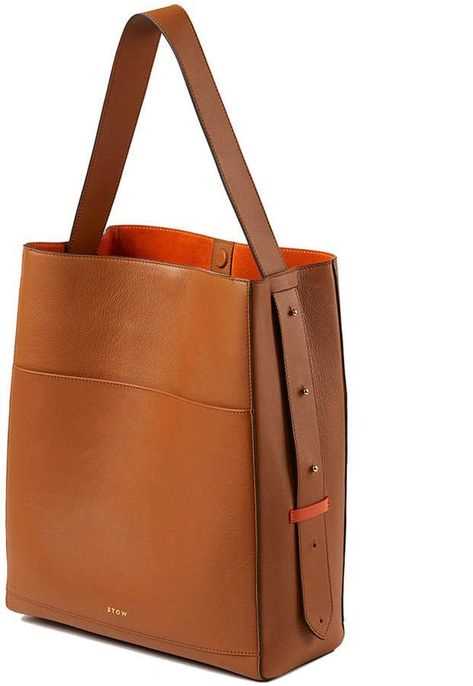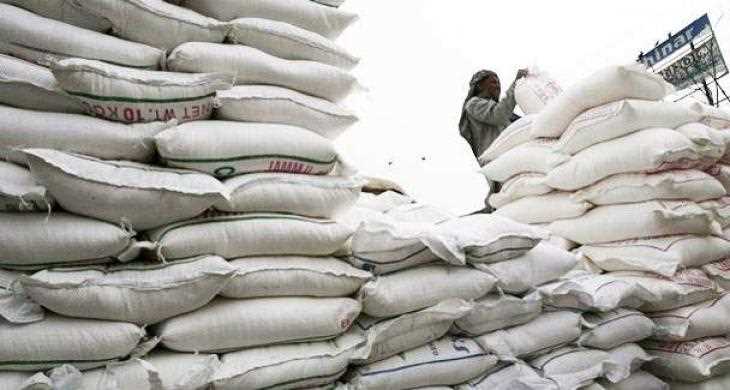A quota bag is a term used in international trade to refer to a specific amount of a product that is allowed to be imported or exported within a certain time period. Quotas are often put in place by governments to regulate the flow of goods and protect domestic industries.
In order to manage quotas, governments issue quota bags to importers or exporters. These bags represent a specific quantity of a product and can be traded or sold to other companies. Quota bags ensure that the amount of goods entering or leaving a country remains within the limits set by the government.
Quota bags can be a valuable asset for companies involved in international trade. They allow companies to access restricted markets and compete with other companies for a limited supply of goods. The value of a quota bag can fluctuate based on market conditions and demand for the product.
It is important for companies to understand the regulations and requirements surrounding quota bags in order to effectively navigate the international trade market. Failure to comply with quota restrictions can result in penalties or other consequences for companies.
What is a quota bag?
A quota bag is a term used to describe a specific type of bag that is used to fulfill import quotas. Import quotas are restrictions placed on the quantity of certain goods that can be imported into a country. Quota bags are used as a means of managing these import quotas and ensuring that they are not exceeded.
Typically, quota bags are used for agricultural and food products such as sugar, rice, and cotton. These bags are often made of jute or other natural fibers and are designed to be strong and durable. They may be marked with specific information such as the country of origin, the type of product, and the quantity contained.
Quota bags are typically used to track and monitor the importation of goods that are subject to quotas. They may be required to be used by importers or exporters as a way to ensure compliance with the quota regulations set by the importing country. By using quota bags, the authorities can easily determine if the quota limits have been met and take appropriate action if necessary.
It is important to note that quota bags are not used in all countries or for all types of products. The use of quota bags depends on the specific regulations and policies of each country. Some countries may use other methods or systems to regulate imports, such as import licenses or tariffs.
Overall, quota bags play an important role in managing import quotas and ensuring that they are followed. They provide a way to track and monitor the importation of goods, helping to prevent the over-importation of specific products and protect domestic industries.
What is a quota bag and why is it important?
A quota bag is a type of bag used in the fishing industry to comply with fishing quotas set by regulatory bodies. Fishing quotas are limits imposed on the amount of fish that can be caught in order to protect fish populations and ensure their sustainable management.
These quota bags, also known as catch bags or allocation bags, are used by fishermen to store their catch and help them accurately measure and record the amount of fish they have caught. The bags are usually made of durable materials such as mesh or woven fabric, allowing water to flow through and keep the fish fresh while minimizing damage to their scales and skin.
Using quota bags is important for several reasons. First and foremost, it helps ensure the conservation of fish stocks. By setting limits on the amount of fish that can be caught, quota bags prevent overfishing and depletion of fish populations. This is crucial for maintaining the overall balance of marine ecosystems and preserving biodiversity.
Furthermore, quota bags play a key role in supporting sustainable fisheries management. By accurately measuring and recording the amount of fish caught, regulatory bodies can monitor fishing activities and enforce compliance with the set quotas. This data is essential for making informed decisions regarding the management and conservation of fish stocks.
Quota bags also promote fair and equitable distribution of fishing resources. By allocating a specific quota to each fisherman or fishing vessel, quota bags help prevent concentration of fishing efforts on certain species or in specific areas. This helps ensure that all fishermen have equal opportunities to catch fish, promoting a more balanced and sustainable fishing industry.
In summary, quota bags are an important tool in ensuring the conservation of fish stocks, supporting sustainable fisheries management, and promoting fair distribution of fishing resources. By using these bags, fishermen can contribute to the long-term viability of the fishing industry and help protect marine ecosystems for future generations.
How does a quota bag work?
A quota bag is a textile product that is specially designed to meet the requirements of specific import regulations or trade agreements. It is called a “bag” because it is typically made of fabric and resembles a bag in shape.
The purpose of a quota bag is to ensure that a specific quantity of a product can be imported into a country within a specified time frame. Quotas are imposed on certain goods to control their supply in order to protect domestic industries, manage trade relationships, or fulfill international agreements.
A quota bag works by serving as a container for a predetermined quantity of goods that are subject to import restrictions. These restrictions can be based on various factors such as the country of origin, the type of product, or the time period in which the imports are allowed.
Here is a general overview of how a quota bag works:
- Determination of quotas: Quotas are set by the importing country’s government or regulatory authority. These quotas can be based on factors such as product type, country of origin, or trade agreements.
- Issuance of quota licenses: Once the quotas are determined, the importing country’s government or regulatory authority issues quota licenses to authorized importers. These licenses specify the quantity of goods that can be imported within a specific time period.
- Importation using quota bags: Authorized importers use quota bags to import the goods specified in the quota licenses. The goods are packed and sealed in the quota bags, and the bags are marked with relevant information such as the quota license number and the importing country.
- Customs clearance: When the goods arrive in the importing country, they go through customs clearance. The customs officials verify the contents of the quota bags and ensure that they comply with the quota restrictions and regulations.
- Monitoring and enforcement: The importing country’s government or regulatory authority monitors the importation and enforces compliance with the quota restrictions. This may involve inspecting the quota bags to ensure that the correct quantity of goods is being imported and that the quota regulations are being followed.
In summary, a quota bag is used to facilitate the importation of goods within specific quantity restrictions imposed by the importing country. It helps ensure compliance with import regulations and allows for the effective management of trade relationships and international agreements.
Types of quota bags
Quota bags can be classified into several types based on their purpose and design. Here are some commonly used types:
-
Import quota bags: These bags are used to regulate the quantity of a specific product that can be imported into a country over a specific period. They aim to protect domestic industries and ensure a fair balance of trade.
-
Export quota bags: These bags limit the quantity of a particular product that can be exported from a country within a certain timeframe. Export quotas are often imposed to protect domestic supply, maintain stable prices, or comply with international trade agreements.
-
Production quota bags: These bags determine the maximum quantity of a product that a manufacturer or industry can produce during a specific period. Production quotas are implemented to manage supply, prevent overproduction, and maintain market stability.
-
Tariff-rate quota bags: These bags combine elements of both quotas and tariffs. They allow a specified quantity of a product to be imported at a lower or zero tariff rate, while imports beyond that quantity are subject to higher tariffs. Tariff-rate quotas are often used to facilitate trade while protecting domestic industries.
-
Voluntary export restraint bags: These bags are voluntary agreements between exporting and importing countries to limit the quantity of a specific product that can be exported. Importing countries may request voluntary export restraints to protect domestic industries or resolve trade tensions without resorting to formal trade barriers.
Each type of quota bag serves a different purpose in international trade and has its own set of implications for domestic industries, consumers, and global market dynamics.
Benefits of using a quota bag
Quota bags, also known as quota allocation bags or quota luggage, offer several advantages for individuals who travel frequently or need to transport specific items. Here are some of the benefits of using a quota bag:
- Quota allocations: Quota bags are specifically designed to meet quota allocations set by regulatory bodies. Using a quota bag ensures compliance with these regulations, allowing individuals to transport restricted items legally.
- Convenience: Quota bags provide convenience by offering dedicated storage space for quota-regulated items. This allows for efficient packing and easy access during travel.
- Organization: With dedicated compartments and pockets, quota bags help keep items organized, making it easier to locate and retrieve specific items when needed.
- Customizability: Many quota bags come with adjustable dividers, removable sections, and additional pockets, allowing users to customize the bag’s interior to suit their specific needs and preferences.
- Security: Quota bags often feature sturdy and durable materials, reinforced handles, and secure closures, ensuring the safety and security of the items within.
- Portability: Quota bags are designed to be lightweight and portable, making them ideal for travel. They are often designed with features like wheels, telescopic handles, and backpack straps for easy transportation.
- Durability: Many quota bags are made from high-quality materials that are resistant to wear and tear, ensuring longevity and durability, even with frequent use.
Overall, using a quota bag offers individuals a convenient and compliant way to transport restricted items, while also providing organization, security, and durability throughout their travels.
Who needs a quota bag?
A quota bag is necessary for the following individuals:
- Travellers who want to limit their purchases of goods from abroad
- People who want to bring back goods for personal use
- Business professionals attending trade shows or conferences
- Importers and exporters who need to comply with international trade regulations
It is important to note that the need for a quota bag may vary depending on the specific country and its trade policies. Therefore, it is recommended to check the customs regulations of the destination country before travelling.
How to choose the right quota bag?
Choosing the right quota bag can be a daunting task, but with some considerations, you can easily find the one that suits your needs. Here are some factors to consider when choosing a quota bag:
- Capacity: Determine how much volume you need the bag to hold. Think about the quantity and size of items you will be carrying.
- Material: Consider the material used to make the bag. Common options include canvas, nylon, and polyester. Choose a material that is durable and can withstand the conditions in which you’ll be using the bag.
- Compartments: Think about the number of compartments or pockets you’ll need. Different compartments can help you organize your items more effectively.
- Handles and Straps: Consider the type of handles or straps the bag has. Some bags have shoulder straps, while others have handles for carrying by hand. Choose a style that is comfortable for you.
- Closure: Look at the closure mechanism of the bag. Some bags have zippers, while others have buckles or drawstrings. Consider the level of security and convenience you prefer.
- Price: Set a budget for your quota bag purchase. Bags come in a wide range of prices, so establish how much you’re willing to spend and look for options within your budget.
- Brand and Reviews: Research different brands and read reviews from other customers. This can give you an idea of the quality and durability of the bag you’re considering.
By considering these factors, you can choose the perfect quota bag that meets all your requirements.
Maintaining and caring for a quota bag
A quota bag is a valuable tool that helps individuals keep track of their daily activities and achieve their goals. To ensure that your quota bag remains in good condition and lasts for a long time, it is important to maintain and care for it properly. Here are some tips on how to do so:
- Clean it regularly: Dust and dirt can accumulate on the surface of your quota bag, so make sure to clean it regularly. Use a soft cloth or brush to remove any dirt, and avoid using harsh chemicals that may damage the material.
- Store it properly: When you are not using your quota bag, store it in a cool and dry place to prevent any damage. Avoid exposing it to direct sunlight, as this can cause the colors to fade.
- Avoid overstuffing: While a quota bag is designed to hold a certain amount of items, avoid overstuffing it beyond its capacity. Overloading the quota bag can lead to unnecessary strain on the seams and zippers, causing them to tear or break.
- Check for wear and tear: Regularly inspect your quota bag for any signs of wear and tear. Pay attention to the seams, zippers, and handles, as these are the areas that are most prone to damage. If you notice any issues, repair them promptly to prevent further damage.
- Organize your items: Use the compartments and pockets in your quota bag to keep your items organized. This will help minimize the chances of them getting damaged or lost inside the bag. Additionally, it will make it easier for you to find what you need quickly.
- Avoid exposing it to extreme conditions: Try to avoid exposing your quota bag to extreme temperatures, humidity, or moisture. These conditions can cause the material to deteriorate, resulting in damage to your bag.
- Follow the manufacturer’s instructions: Lastly, always follow any care instructions provided by the manufacturer. Different types of quota bags may require specific care methods, so it is important to adhere to these guidelines to maintain the bag’s quality.
By following these maintenance tips, you can ensure that your quota bag remains in optimal condition and continues to serve you well in your daily activities.
Where to buy a quota bag?
If you are interested in purchasing a quota bag, there are several options available to you. Here are a few places where you can find and buy a quota bag:
- Online retailers: Websites such as Amazon, eBay, and other online marketplaces often have a wide selection of quota bags available for purchase. You can browse through different options, compare prices, and read customer reviews before making a decision.
- Outdoor and sporting goods stores: Many physical stores that specialize in outdoor and sporting goods also carry quota bags. These stores may have a dedicated section for backpacks and bags, where you can find quota bags of different sizes and styles.
- Specialty stores: Some stores specialize in selling travel accessories or bags and may also carry quota bags. These stores often have a curated selection of high-quality bags and can provide expert advice on choosing the right quota bag for your needs.
- Manufacturer’s website: If you have a specific brand or model of quota bag in mind, you can visit the manufacturer’s website to see if they sell their products directly to consumers. Buying from the manufacturer can ensure that you are getting an authentic and high-quality quota bag.
Before making a purchase, it is a good idea to compare prices and read reviews from other customers to ensure that you are getting the best deal and a reliable product. Consider your specific needs, such as size, durability, and features, when choosing a quota bag that will meet your requirements.
Question and answer:
What is a quota bag?
A quota bag is a type of import restriction that is imposed by a country to control the quantity of a certain product that can be imported into the country.
Why do countries impose quota bags?
Countries impose quota bags to protect domestic industries and businesses from foreign competition. By limiting the quantity of imported products, the government aims to prevent foreign companies from flooding the domestic market and taking away market share from local producers.
How does a quota bag work?
A quota bag works by setting a maximum limit on the quantity of a specific product that can be imported into a country. This limit can be determined by a fixed number, a percentage of the domestic market demand, or a combination of both. Once the limit is reached, any additional imports of the product are either prohibited or subject to additional tariffs or restrictions.
What are the advantages of using quota bags?
The advantages of using quota bags include protection of domestic industries, preservation of jobs, and the possibility of developing and nurturing local businesses. Additionally, quota bags can also help maintain a balance of trade by limiting imports and preventing a trade deficit.
Are there any disadvantages to using quota bags?
Yes, there are some disadvantages to using quota bags. One major disadvantage is that they can lead to higher prices for imported products, as the limited supply can create artificial scarcity and drive up demand. Quota bags can also lead to tensions and disputes between countries, especially if they are used as a means of protectionism or manipulating trade relations.


